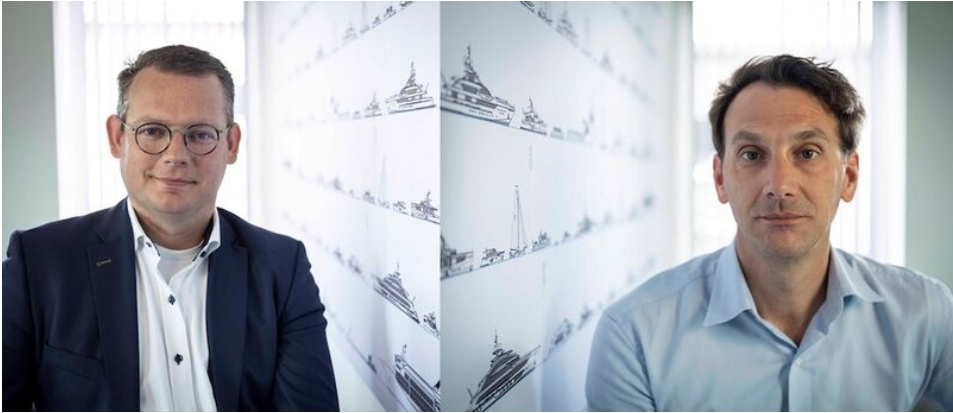Van Oossanen Naval Architects has been pushing forward innovations in the maritime industry since its foundation. While sustainability has been on the forefront of the industry’s collective mind in recent years, few businesses are making more active strides toward a sustainable future than Van Oossanen, who places it at the top of their priority list. Earlier this year we sat down with Perry Van Oossanen to dive into the history of the company and specifically to discuss the Fast Displacement Hull Form (FDHF) which has been improving the efficiency of superyachts since the launch of Galactica Star in 2012. Now Perry’s business partner Niels Moerke joined us to discuss more about how the business aims to create a blueprint for the future of the yachting and maritime industries.
But why is the company so focused on sustainability? We posed this question to Perry and Niels and the response was unanimously ‘passion’. As Perry added, “We will always continue to develop and push toward more sustainable solutions for our industry, it is at the core of everything we do, truly within the DNA of this company.” For both of them the industry move toward sustainable solutions has been a long-time coming but while the industry has dragged its feet, the Van Oossanen team has been innovating.

With 20% of the company’s time invested into independent research and development, and all of the employees encouraged to follow their own threads of innovation, it is no surprise that the architects continue to be at the forefront of the sustainability conversation. Pioneering solutions such as the Hull Vane and FDHF are the result of their intense focus in R&D and the company’s recent involvement in the Dutch government’s Project MENENS programme is yet another example of the commitment to future-proofing the industry.

Van Oossanen became involved with the Project MENENS programme to further the Dutch government’s ambition to have 30 emission free vessels sailing by 2030. Focusing on the use of artificial intelligence and CFD (Computational Fluid Dynamics), Van Oossanen has been working to further optimise the FDHF form, “We are actually already able to achieve the 40 percent reduction in emissions through the application of the Fast Displacement Hull Form XL, which can be applied to both superyachts and commercial vessels.” The company’s aim now is to have emission free yachts sailing by 2030 – they are already well on their way to achieving this goal.

While the government has committed to cover 40 percent of the costs of the research, the rest of the funding is being provided by Van Oossanen themselves, a clear demonstration of the company’s commitment to the goal. We asked Niels why Van Oossanen was open to such a major financial commitment. “One of the very interesting things about this project is that there are partners involved working on the entire lifecycle of a vessel, from research to construction, meaning that there are build partners already involved. There are yachting industry shipyards, commercial shipbuilding companies, suppliers and even the Dutch Navy is part of the project. It is vital for us to be able to offer our clients the best possible options for their yachts and we must safeguard those clients interest for the long term, that is our aim.”

Another major focus for the Van Oossanen team over recent years has been the development of methanol as the future alternative fuel for the maritime industry. While much has been said in the media about hydrogen, Van Oossanen and its partners believe that methanol holds the brightest prospect for zero emission propulsion as Niels commented, “methanol has been slightly overlooked in our industry and our aim is to create the technical platform that can be employed for methanol yachts and vessels. In addition, you can produce green methanol from the bi-product of other industries, such as grain, and that adds another cyclical layer into the fuel production-use cycle.”
Both Niels and Perry recognise that the conversation around alternative fuel options, electric, hydrogen and methanol, all face limitations, namely the lack of infrastructure to produce and store the fuel ashore. However, Van Oossanen has dedicated a huge commitment to the development of such systems so that when the infrastructure is in place, they will be ready to engineer vessels that can accommodate methanol and its systems.
The company’s commitment to research and development with methanol is absolutely demonstrative of the wider commitment at Van Oossanen to innovate within the sustainability sphere. Dr. Ir. Peter van Oossanen founded the company to create the most efficient hull form, today that motivation has metastasized into an absolute drive toward efficiency for the purpose of sustainability. This is at the beating heart of Van Oossanen Naval Architects, and we can continue to expect the business to be at the forefront of future innovations in this sphere.

